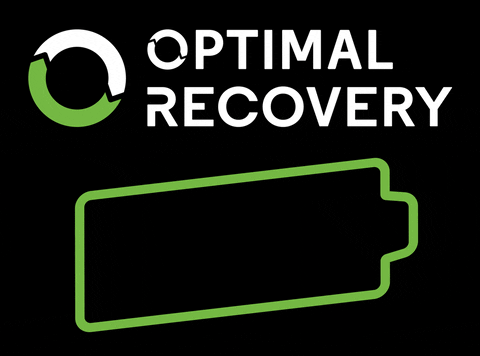- AI Mastery Adventure
- Posts
- 7 Secret Strategies to Explode Your Online Earnings Overnight! 🚀 Discover What the Pros Won't Tell You!
7 Secret Strategies to Explode Your Online Earnings Overnight! 🚀 Discover What the Pros Won't Tell You!
Ever wonder why some people seem to effortlessly make money online while others struggle? Today, you're going to uncover the secrets that could turn your online activities into a goldmine. Are you ready to transform your approach and start seeing real results?
Let's peel back the curtain on some of the most closely guarded secrets of successful online earners.
1. Choose the Right Niche 🎯

Choosing the right niche is not just about following your passions—it's about strategically targeting areas where those passions intersect with real market needs and opportunities. Here’s how you can unearth a niche that’s both a personal fit and commercially viable.
Why Niche Choice Matters: A well-chosen niche can dramatically impact the success of your online endeavors. It helps you focus your marketing efforts, tailor your content, and connect with a specific audience. But what makes one niche better than another? It comes down to demand, competition, and profitability.
Finding Your Niche:
Assess Your Interests and Expertise: Start with what you know and love. Your enthusiasm for your subject will resonate with your audience and sustain your motivation.
Identify Problems You Can Solve: Every successful business solves a problem. What challenges do your interests align with that people are actively looking to address?
Research Market Viability: Use tools like Google Trends to analyze search trends and market demand. Look at social media hashtags, join forums, and read industry blogs to gauge interest levels and discover underserved areas.
Evaluating Profitability:
Check Affiliate Networks: Platforms like Amazon Associates, ClickBank, and others offer insights into what products are selling well and the commission structures.
Competitor Analysis: Look at successful competitors. What niches are they targeting? Use tools like SEMrush or Ahrefs to see their traffic sources, top products, and key income streams.
Potential for Monetization: Consider various monetization options beyond affiliate marketing, such as creating your own products, offering services, or generating ad revenue.
Validating Your Niche:
Conduct Surveys and Polls: Reach out to potential audience members via social media or email to ask directly about their interests and pain points.
Test with PPC Ads: Run a series of small, inexpensive pay-per-click (PPC) advertising campaigns on platforms like Google AdWords or Facebook to see how much interest there is in your niche.
Start Small and Scale: Launch a mini version of your business, such as a small-scale blog or an online store with a few products. Use this as a testing ground to gather data and learn what works before fully committing.
Stay Agile: Remember, your first choice doesn’t have to be your final one. Markets evolve, and flexibility can be your best asset. Keep analyzing and adapting as you learn more about what your audience truly wants and needs.
Summary: Choosing the right niche is about finding a sweet spot where your passions, skills, and a clear market demand meet. It's about being astute, using data-driven strategies to identify opportunities, and not being afraid to pivot as you gather more insights. This strategic approach ensures that you invest your time and resources into a niche with the potential to grow and generate substantial income.
2. Build a Solid Platform 🚀

Once you’ve identified a promising niche, the next step is to establish a solid platform from which you can share content, engage with your audience, and promote products. Here’s how to create a platform that not only attracts but retains and converts visitors.
Why Building a Strong Platform is Crucial: Your platform is essentially your online headquarters—the face of your brand. A well-designed, user-friendly platform can enhance credibility, boost engagement, and significantly impact your conversion rates.
Choosing the Right Platform:
Blogs and Websites: Ideal for detailed articles, guides, and affiliate marketing. Platforms like WordPress and Squarespace offer great customization and SEO capabilities.
Social Media: Platforms like Instagram, TikTok, and YouTube are perfect for visual and video content, reaching diverse audiences quickly.
E-commerce Stores: For those selling products directly, Shopify or WooCommerce provide robust e-commerce tools tailored for online selling.
Designing Your Site:
User Experience (UX): Ensure that your site is easy to navigate, with logical navigation and a clean design. This minimizes bounce rates and maximizes engagement.
Mobile Optimization: With the majority of internet browsing done on mobile devices, your platform must perform flawlessly across all device types.
Visual Appeal: Use high-quality images and a consistent color scheme that reflects your brand identity. Attractive sites are more likely to retain visitors longer.
Optimizing for Search Engines (SEO):
Keyword Research: Use tools like Google Keyword Planner or Ahrefs to find keywords that your target audience searches for and incorporate them naturally into your content.
On-page SEO: Optimize elements like titles, meta descriptions, and header tags to help search engines understand and rank your content.
Content Quality: Google favors sites that offer valuable and unique content. Regularly update your site with fresh, relevant content to maintain a high ranking.
Engaging Content Creation:
Content Strategy: Plan a content calendar that covers topics that are not only interesting but also solve problems for your audience. This could include tutorials, product reviews, and expert insights.
Diverse Formats: Incorporate a mix of content types such as text, video, infographics, and podcasts to cater to different preferences within your audience.
Interaction and Calls to Action: Encourage user interaction by incorporating comment sections, forums, or feedback forms. Use clear calls to action to guide users towards subscribing, purchasing, or any other desired action.
Maintaining Your Platform:
Regular Updates: Keep your platform technology up to date to ensure security and improve functionality.
Performance Monitoring: Use tools like Google Analytics to monitor your website’s performance. Pay attention to metrics like page load times, bounce rates, and user paths to continuously improve the user experience.
Feedback Loop: Encourage and monitor user feedback to understand their experience on your site. Implement changes based on this feedback to enhance usability and satisfaction.
Summary: Building and maintaining a solid platform is about more than just having a place to post content. It’s about creating a professional, engaging, and efficient online space that reflects your brand, meets your audience's needs, and facilitates the growth of your online business. With the right approach, your platform can become a powerful tool to attract, engage, and convert your target audience.
3. Quality Content is Key ✍️

High-quality content is the lifeblood of any successful online platform. It attracts visitors, engages them deeply, and converts them into loyal followers or customers. Here’s how you can create content that not only draws attention but also retains and compels your audience to take action.
Why Quality Content Matters: Content is what pulls your audience in and keeps them coming back. High-quality, engaging content builds trust, establishes your authority in your niche, and improves your search engine rankings. It also plays a crucial role in the effectiveness of your affiliate marketing efforts, as compelling content can significantly boost product endorsements and conversions.
Crafting Engaging Content:
Understand Your Audience: The first step in creating great content is to know who you're writing for. Develop personas for your audience segments to tailor your content to their interests, problems, and behaviors.
Content Variety: Mix up your content types to keep things interesting. Include blog posts, videos, tutorials, infographics, and even podcasts to cater to different learning styles and preferences.
Storytelling: People love stories. Incorporate storytelling into your content to make it more relatable and memorable. Share success stories, case studies, or personal anecdotes that highlight your messages or products.
Ensuring Content Quality:
Research Thoroughly: Every piece of content should be well-researched and fact-checked. Providing accurate and up-to-date information establishes credibility and trust with your audience.
Focus on Value: Each piece of content should offer value, whether it's solving a problem, providing insights, or entertaining. Always ask yourself, "What will the reader gain from this?"
Optimize for SEO: While your content should primarily cater to your audience’s needs, also optimize it for search engines to increase its visibility. Use relevant keywords, meta tags, and alt text for images to improve your SEO without compromising the natural flow of your content.
Content Promotion:
Social Media: Leverage social media platforms to share and promote your content. Tailor the message for each platform to maximize engagement.
Email Newsletters: Use your email list to promote new content directly to your followers. This not only drives traffic but also keeps your audience engaged with your brand.
Guest Posting: Collaborate with other bloggers or influencers in your niche to write guest posts. This can help you reach a broader audience and gain credibility.
Measuring Content Effectiveness:
Analytics: Use analytics tools to track how your content is performing. Look at metrics like page views, shares, comments, and time spent on page to gauge engagement.
Feedback: Encourage comments and interaction on your content. This direct feedback can be invaluable in understanding what your audience likes and dislikes.
Adjustments: Be ready to tweak your content strategy based on performance and feedback. This agile approach allows you to continuously improve the quality and effectiveness of your content.
Summary: The creation of high-quality content is a dynamic process that requires understanding your audience, offering valuable and varied content, and continuously optimizing based on feedback and analytics. By focusing on these elements, you can create a content strategy that not only attracts visitors but turns them into engaged followers and customers, enhancing the overall success of your online presence.
4. Leverage Affiliate Programs 💼

Affiliate marketing is a powerful tool to monetize your online presence effectively. By promoting other companies' products, you earn a commission for each sale made through your referral. Here’s how to strategically select and promote affiliate programs to maximize your income potential.
Why Affiliate Marketing Works: Affiliate marketing offers a win-win situation for both marketers and merchants. It allows you to generate income without having to create your own products, while merchants benefit from increased sales through a network of motivated affiliates. When done right, it can provide a substantial revenue stream based on performance and effort.
Choosing the Right Affiliate Programs:
Relevance to Your Niche: Select affiliate programs that align closely with your content and audience interests. Products that resonate with your audience are more likely to convert.
Reputation and Reliability: Research potential affiliate programs to ensure they are reputable and reliable. Look for reviews and testimonials from other affiliates to gauge the program's credibility and quality of products.
Commission Structure: Evaluate the commission rates and payment terms. Prefer programs offering competitive rates and reliable payout schedules. Also, consider the cookie duration, which determines how long after a click your referral will still count towards a commission.
Promoting Affiliate Products:
Transparent Promotion: Always disclose your affiliate relationships to your audience to maintain transparency and build trust. This can be done through disclaimers on your posts and pages.
Integrated Content: Promote affiliate products through integrated content such as product reviews, tutorials, and how-to guides. This type of content can naturally include affiliate links and provides value to your audience by showing real-world applications of the products.
Strategic Placement: Place affiliate links where they are most likely to be clicked without disrupting the user experience. This includes high-traffic areas of your website, within your most popular posts, or as part of your newsletter.
Optimizing Affiliate Efforts:
Track and Analyze: Use affiliate marketing tools and analytics to track the performance of your affiliate links. Pay attention to which products and types of content yield the best results.
A/B Testing: Experiment with different strategies for promoting affiliate products, such as varying the placement of links, changing the types of content, or using different calls to action.
Continuous Learning: Stay updated with the latest trends in affiliate marketing. Join affiliate forums, attend webinars, and subscribe to newsletters from affiliate marketing thought leaders.
Building Relationships with Merchants:
Negotiate Better Deals: Once you establish a track record of successful promotions, negotiate with merchants for higher commission rates or exclusive deals that you can offer to your audience.
Request Promotional Materials: Ask for access to promotional materials that can help you better market the products, such as high-quality images, videos, or user testimonials.
Summary: Effective use of affiliate marketing requires choosing the right programs, integrating promotions seamlessly into your content, and maintaining transparency with your audience. By focusing on strategic promotion and continuous optimization, you can enhance the effectiveness of your affiliate marketing efforts and significantly boost your online earnings.
5. Utilize Email Marketing 📧

Email marketing remains a crucial and effective strategy for building relationships with your audience and driving conversions. It allows for direct communication and personalized engagement with your subscribers. Here’s how you can effectively use email marketing to nurture leads and maximize your online income.
Why Email Marketing Is Effective: Email allows you to reach your audience directly in their inboxes, providing a more personal touch compared to other marketing channels. It offers higher conversion rates as you can tailor messages to meet the specific interests and needs of your subscribers. Additionally, it's cost-effective, providing one of the highest ROI among digital marketing strategies.
Building Your Email List:
Opt-In Strategies: Encourage website visitors to subscribe to your email list by offering value in return, such as exclusive content, discounts, or freebies like ebooks or webinars.
High-Visibility Sign-Up Forms: Place email sign-up forms prominently on your website—on the homepage, at the end of blog posts, and as a popup. The key is to make it easy and tempting for visitors to subscribe.
Use of Lead Magnets: A lead magnet is something of value given away for free in exchange for an email address. Ensure your lead magnet is highly relevant to your niche and provides real value to your audience.
Crafting Effective Emails:
Personalization: Use the subscriber's name and tailor content based on their preferences and past interactions with your site. Personalization can significantly increase open rates and engagement.
Content Quality: Just like your site content, emails should provide value. Whether it's insightful tips, updates on your latest posts, or special offers, keep your emails interesting and beneficial.
Clear Call-to-Action: Every email should have a clear objective and a strong call-to-action (CTA). Whether it's reading a blog post, checking out a sale, or joining a webinar, your CTA should be concise and compelling.
Email Campaign Strategies:
Welcome Series: Send a series of welcome emails when new subscribers join your list. Introduce them to your brand and provide valuable content to start the relationship on the right foot.
Regular Newsletters: Send regular updates that keep subscribers informed about new content, offers, and news. Consistency helps keep your brand top-of-mind.
Segmentation: Divide your email list into segments based on demographics, behavior, or engagement levels. This allows for more targeted and relevant email campaigns.
Measuring Success and Optimization:
Track Key Metrics: Monitor open rates, click-through rates, and conversion rates to understand the effectiveness of your email campaigns. Tools like Beehiiv offer comprehensive analytics.
A/B Testing: Regularly test different elements of your emails (e.g., subject lines, content layout, images) to see what resonates best with your audience and improves performance.
Feedback Collection: Occasionally ask for feedback directly from your subscribers about what they like or dislike about your emails, and what they want to see more of.
Summary: Email marketing is a powerful tool for engaging directly with your audience and building lasting relationships. By focusing on list building, crafting personalized and valuable emails, and continuously optimizing based on performance data, you can maximize the impact of your email marketing efforts and significantly boost your online success.
6. Monitor and Optimize 📊

To ensure the continued success of your online ventures, it's critical to monitor the performance of your website, content, and marketing campaigns, and then optimize based on the data gathered. Here’s how to implement effective monitoring and optimization strategies to enhance your results and increase profitability.
Why Monitoring and Optimization Matter: Consistent monitoring allows you to understand what works and what doesn’t, enabling you to make informed decisions that drive better results. Optimization based on this data helps improve user experience, increase conversion rates, and maximize ROI across all your digital marketing efforts.
Setting Up Effective Monitoring:
Analytics Tools: Utilize tools like Google Analytics to track website traffic, user behavior, and conversion metrics. These tools provide insights into how visitors interact with your site, which pages they visit, how long they stay, and where they drop off.
Performance Metrics: Focus on key performance indicators (KPIs) relevant to your goals. These might include page load times, bounce rate, engagement rate, and conversion rate. Regularly checking these metrics can help you gauge the health of your website and campaigns.
User Feedback: Implement tools for collecting user feedback directly through your website. This can be in the form of surveys, feedback forms, or chatbots. User feedback is invaluable for understanding subjective experiences on your site.
Optimization Techniques:
A/B Testing: Conduct A/B tests to compare different versions of your web pages or elements within your emails to determine which versions perform better in terms of user engagement and conversions. Test elements like CTAs, page layouts, headlines, and images.
Page Speed Optimization: Use tools like Google PageSpeed Insights to analyze and improve the loading speed of your website. Faster page speeds enhance user experience and are also a factor in Google’s search rankings.
Content Updates: Regularly update your content to keep it relevant and fresh. This includes updating or repurposing old blog posts, which can boost SEO and provide better information to your audience.
SEO Enhancements: Continuously refine your SEO strategy. This involves updating keyword strategies, improving internal linking, and enhancing the overall content quality to meet the latest SEO standards and user expectations.
Leveraging Technology for Optimization:
Heatmaps: Use heatmap tools like Hotjar or Crazy Egg to see where users are clicking most frequently on your page, where they're spending time, and where they aren't. This can provide insights into user preferences and help optimize layout and design.
Predictive Analytics: Advanced tools use AI and machine learning to predict future behaviors based on historical data. This can help in targeting offers and content more effectively to increase conversion rates.
Automation Tools: Employ marketing automation tools to streamline repetitive tasks like email marketing, social media posting, and ad campaigns. Automation ensures consistency and efficiency, freeing up time to focus on strategy and creative efforts.
Summary: Monitoring and optimizing your digital assets are not one-time tasks but ongoing processes that play a crucial role in your online success. By systematically analyzing performance data, engaging with user feedback, and implementing changes based on these insights, you can significantly enhance user experience, improve SEO performance, and increase the effectiveness of your marketing efforts. This ongoing cycle of improvement will help you stay competitive and adapt to changing user needs and market conditions.
7. Stay Updated and Network 🌐

In the fast-paced world of digital marketing and online business, staying updated with the latest trends and networking with peers are crucial for sustained success. These practices not only keep you informed about new developments but also open doors to collaborations and new opportunities. Here’s how to stay ahead of the curve and make the most of your professional network.
Why Staying Updated and Networking Matter: Keeping abreast of industry trends helps you adapt to changes and leverage new tools and strategies before they become mainstream. Networking, on the other hand, builds relationships that can lead to collaborative projects, partnerships, and learning from shared experiences.
Keeping Up with Industry Trends:
Follow Influential Blogs and News Sites: Subscribe to leading digital marketing and affiliate marketing blogs, like HubSpot, and Affiliate Summit. These platforms offer valuable insights into current practices and future trends.
Attend Conferences and Webinars: Participate in industry conferences, workshops, and webinars. These events are great for learning from experts and can significantly enhance your knowledge and skills.
Leverage Social Media: Follow relevant hashtags and industry leaders on platforms like Twitter and LinkedIn. Social media can be a real-time source for news, tips, and discussions.
Effective Networking Strategies:
Join Professional Groups and Forums: Become active in online communities related to your niche. Platforms like Reddit, LinkedIn groups, and specialized forums are excellent for exchanging ideas and advice.
Connect with Peers and Influencers: Don’t hesitate to reach out directly to peers and influencers in your field. Many professionals are open to sharing advice and might be looking for collaboration opportunities.
Offer Value: When networking, focus on how you can offer value to others. Whether it’s sharing your own insights, providing feedback, or helping with a project, building relationships based on mutual benefit is key to effective networking.
Building Collaborative Opportunities:
Guest Blogging: Offer to write guest posts for other blogs in your industry, and invite others to contribute to your site. This not only builds relationships but also helps with gaining backlinks and reaching new audiences.
Joint Ventures: Look for opportunities to collaborate on projects or promotions that can benefit both parties. This could be a joint webinar, an ebook, or a co-branded campaign.
Stay Open to Partnerships: Keep an open mind about forming partnerships with other businesses. These can open up new markets and customer bases.
Maintaining Relationships:
Regular Check-ins: Maintain your professional relationships by checking in periodically. A simple message asking about recent projects or sharing an article of interest can keep the connection alive.
Be Responsive: When contacts reach out to you, respond promptly. This shows respect for their time and interest in maintaining the relationship.
Celebrate Others’ Successes: When someone in your network achieves something, celebrate it. Congratulating others on their successes can strengthen your relationships and foster a positive community.
Summary: Staying updated with the latest industry trends and actively networking are essential practices that fuel continuous learning and open up new opportunities. By dedicating time to follow developments and build meaningful relationships, you can stay ahead in the dynamic field of online marketing, continuously enhancing your strategies and expanding your influence.
Conclusion: Embrace the Journey to Online Success 🌟
Embarking on your online income journey can seem daunting at first, but with the right strategies and mindset, it's not only achievable but can also be incredibly rewarding. By following the seven strategic steps we've outlined—from choosing the right niche, building a robust platform, and creating engaging content, to leveraging affiliate programs, mastering email marketing, optimizing continuously, and networking effectively—you are setting yourself up for sustained success.
As you implement these strategies, remember that the digital world is always evolving. Staying adaptable, curious, and proactive in your learning and networking will keep you ahead of the curve. Every step you take builds on the previous ones, creating a comprehensive approach to your online business.
Ready to start your journey? Join our community today for more tips, support, and resources to power your path forward. Don't miss out—your future in successful online marketing begins now. Sign up to my Newsletter and take the first step towards unlocking your online potential. Let's achieve greatness together!